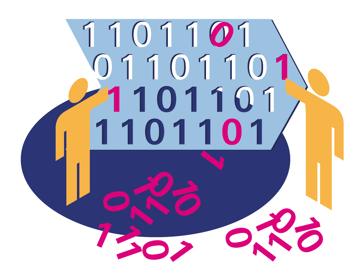The Key Challenges in Digitizing Your Supply Chain
Nick Ostdick - June 15, 2017

 Overhauling your global supply chain management and logistical platform can sure seem like a daunting concept. A holistic rethinking of how and why your planning and production programs function can not only be costly and time-consuming, but it can also reveal new pain points previously unrealized that can pose significant hurdles for planners and managers in executing daily, weekly, and monthly operations.
Overhauling your global supply chain management and logistical platform can sure seem like a daunting concept. A holistic rethinking of how and why your planning and production programs function can not only be costly and time-consuming, but it can also reveal new pain points previously unrealized that can pose significant hurdles for planners and managers in executing daily, weekly, and monthly operations.
However, as digitization across the global supply network becomes more of a necessity, it is important for planners and managers to assess the challenges and risks associated with overhauling their supply pipelines to conform to a more digital platform. Digitizing your supply chain can be challenging, especially for manufacturing companies still reliant on manual inputs and spreadsheet models, but the benefits far outweigh the cost, time, and resources required to bring your supply chain into the digital age.
As such, companies must ask themselves a number of important questions, such as: What are the pitfalls in embracing digitization and reengineering a company's supply stream? What should manufacturers be aware of when incorporating an all-digital platform as part of their supply chain management strategy? And how can these pitfalls be avoided in order to foster true end-to-end (E2E) visibility?
The answers to these questions may provide much clarity for companies as they strive to gain a deeper understanding of their overall supply situation and the efficacy of their planning and production practices. With this in mind, let’s examine a few of the key challenges in digitizing the supply chain and the reasons why companies should take these challenges into account when reengineering their supply networks.
Integrating solutions and systems
Perhaps one of the most common challenges in deploying a digitized supply stream is the holistic integration of supply chain solutions as a core driver of this digitization. Because the nuances of today’s automotive supply chain are vast and varied, companies often have a number of different planning, production, and reporting/data management solutions deployed simultaneously. Creating a digital supply chain strategy requires a top-to-bottom, soup-to-nuts approach that brings each application under the same umbrella. Successful creation and implementation of such a strategy will help eliminate functional silos and increase communication and collaboration surrounding planning and production benchmarks and goals.
Connecting disparate data points and sources
The Internet of Things (IOT) has become a force in supply chain management in recent years as a way of not only connecting systems and solutions, but also fostering more accurate, responsive, and accessible data management and analytics. Via the IOT, digitizing the supply chain connects various methods of collecting, sorting, and evaluating data to help planners and managers create more accurate forecasts of demand for more effective planning strategies.
The connection of data sources helps planners and managers create enhanced what-if scenarios and simulations, both of which are critical for driving planning schemes for production programs. Failure to administer and manage these connections means critical data points and actionable data will not be utilized in understanding how effective and responsive a company’s planning and production strategies can be.
Consistent communication and collaboration
Digitizing the supply chain is a critical move toward eliminating communication silos across an organization. This means major players within the supply stream will have a greater capacity to share data, collaborate on important initiatives, and work in conjunction to ensure smooth workflows free of bottlenecks, disruptions, or breakdowns. Because a digitized supply chain is based in part on a central hub of data storage with multiple access points, gone are the days when those within the supply stream had to wait days or weeks to review data sets and communicate the results of said data. Those within the supply stream access data and communicate its importance in real-time, which is a core driver of end-to-end (E2E) visibility.
Because a manufacturer deploys integrated planning solutions and manages data sources effectively, some planners and managers believe collaboration will simply fall into place - this could not be further from the truth. Collaboration and coordination between various stages of the supply stream are not by-products of digitization, but rather critical functions that must be created, nurtured, and developed over time.
The overall importance of digitization
Today’s automotive supply chain is truly in an information age. Manufacturers rely on the accuracy and availability of data and reporting to create better planning platforms and production programs, but also to more effectively manage inventory, ship and track the movement of parts, and even manage personnel. The point is this: The complete digitization of the supply chain is quickly becoming less of a dream and more of a necessity for companies to remain viable and competitive. The days of a silo-based supply chain are gone and companies must operate in a more lean, streamlined manner to compete on a global stage.
LATEST POSTS
- Understand Circular Economy in The Manufacturing Industry
- How Can Industry 4.0 IT Integration Be Achieved Smoothly?
- The Significance of Order Sequencing in Discrete Manufacturing
- How to improve your Supply Chain Management: The Power of Control Towers
- Optimizing Human Resource Scheduling in Manufacturing: A Technological Approach



